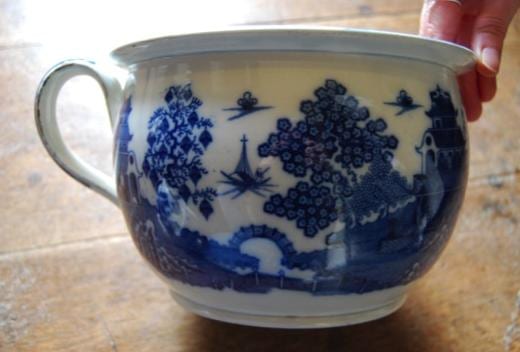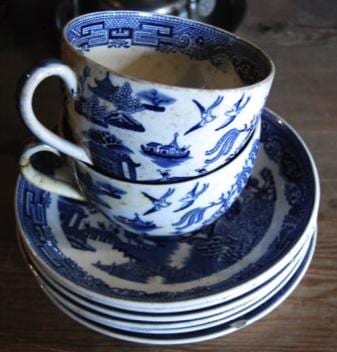Inventories
Within the collections of The John Rylands Library at the University of Manchester I found four different inventories for the nineteenth and early twentieth centuries. Prior to its occupation by Mary Grey and James Grant Lumsden in 1834, the auctioneer Nathaniel Pass of Altrincham completed an inventory of the movable goods within Dunham Massey. Dated 28 July 1819, the inventory sought to value the household contents acquired by the late George Harry Grey (1737-1819), 5th Earl of Stamford.[1] Limited in descriptive detail, this inventory proved difficult to use and interpret. Over sixty years later, in 1883, the auctioneers Artingstall and Hind Ltd of Manchester compiled the second inventory. Made for probate purposes, the inventory described the property of the late George Harry Grey (1827-83), 7th Earl of Stamford.[2] After the turn of the twentieth century, in 1905, the trustees of the late George Harry Grey (1827-83), 7th Earl of Stamford and Warrington instructed Artingstall and Hind to complete a further inventory of the effects of Dunham Massey. Finally in 1912 a fourth inventory was completed. Compiled by Samuel Taylor, the inventory used a room-by-room survey of the house to list the effects of Penelope Grey Countess of Stamford.[3]
I share John Bedell’s opinion that ‘in order to appreciate the strength and weakness of both archeology and probate inventories, it is necessary to compare the two kinds of sources in the most direct way possible.’[4] I was eager to track down the items I had seen at Dunham Massey within the inventories of 1819, 1883, 1905 and 1912 but the term ‘Willow Pattern’ did not appear in the documents. Numerous descriptions however could allude to Willow Pattern wares. These could suggest the existence of Willow Pattern wares within the house as early as 1883 (when Mary Lumsden Grant lived in the house) and continuing through to the twenty-first century.

Figure 9. Willow Pattern ware chamber pot. Dunham Massey, National Trust. Image courtesy of Francesca D’Antonio.
First, the inventory created on 9 March 1883 by Artignstall Hind Appraisers, notes that a ‘blue and white earthen jug and bowl’ is present in imperfect condition in the ‘Stair foot, bedroom and dressing room’ area.[5] As three chamber pots with blue and white Willow Patterns currently exist at the mansion, it is possible that the pot shown above was the one described in the document (see figure 9). ’Chamber ware’ and ‘toilet ware’ are described as being of blue and white nature also in the inventories of 1905 and 1912. The inventory of 1905 cites blue and white toilet wares to be in the ‘brown bedroom and dressing room, (late reading room)’ while the inventory executed in 1912 notes that the closet of the ‘Grey Gallery’ held about forty chamber ware pieces. The diverse approach in description amongst the documents mentioned above highlights two of the limitations of inventories: inconsistency and subjectivity. Various factors such as the author of the documents and the year of execution can lead to discrepancies among the documents. There were no detailed parameters surrounding this practice, leaving room for widely diverging descriptions. The decision to include or exclude items in an inventory is linked with what was deemed prestigious, valuable and noteworthy.[6] It is for this reason, I argue, that the term ‘Willow Pattern’ makes no appearance within inventories. As also noted by John Bedell in his study of probate inventories, appraisers considered earthenware items of low value even in the eighteenth century, when these were hand painted and produced in lower quantities.[7]
Willow Pattern wares were common, inexpensive, modern, local, products of mass production. The absence of the term ‘Willow Pattern’ within such inventories would suggest that it was deemed unnecessary to mention anything with little monetary value. ‘Low value objects’ are a category which has been recognised by Giorgio Riello as ‘more or less systematically excluded from inventories.’[8]
Within the 1905 inventory only one further description could allude to more Willow Pattern wares within the home in the early twentieth century. Within the Tea Room, ‘two blue and white circular dishes’, one being of imperfect condition, are reported. It is unlikely that the wares within this inventory annotation were of Chinese origin, as these were consistently described as ‘Nankin’ or ‘Oriental’ wares within this document. These could have been, the Willow Pattern design as much as any other blue and white design but as noted Robert Copeland in an interview with Debora Skinner, Willow Pattern wares lent themselves easily to conversations, due to their narrative imagery, making it in theory an apt ornament for the ‘Tea Room’.[9] The plates could have been used as both a direct source of conversation and as a visual signifier, which defined the room’s relaxed colloquial nature. Recalling contemporary fashions for tragedies and love stories, the design may well have aided the hostess in her desire to broaden topics of conversation and engage in intimate revelations.

Figure 10. Willow Pattern tea service. Wedgwood Factory. Dunham Massey, Greater Manchester. Image courtesy of Francesca D’Antonio.
Within the 1912 inventory a few additional descriptions recalling items of the Dunham Massey collection are recorded. The ‘Servants Hall’ housed a blue and white breakfast service, and in the Pantry, under the heading ‘China and Glass’, a blue and white and gold Wedgwood service. Nine breakfast bowls of this description survive at the estate (see figure 6 in ‘The Willow Pattern explained’ section above). There is no exact existing match for the description of a ‘blue and white and gold Wedgwood service’, although the blue and white Willow Pattern tea service currently at the estate archives is by Wedgwood, and could have had its golden detailing stripped as a result of use and age (see figure 10).
The inventories discussed in this paper range in specificity and style. This variability limits the quality and quantity of information that can be extrapolated from them. The inventory of 1819 is composed of vague lists, which preclude deciphering individual objects, while the inventory of 1912 presents the reader with an extensive list of items, organised by room and described with succinct information on condition. The manner of sectioning the document into rooms was adapted as early as 1883 in the case of Dunham Massey inventory history. This style of inventorying can be categorised as a ‘piece-by-piece’ or ‘English’ model.[10] As noted by Lena Orlin however, items could have been moved for the convenience of the appraiser, clustering them more densely in certain areas of the house and hence not lending any insight on the objects’ original location within the estate.[11]
Furthermore it must be taken into consideration that there was no specific requirements for the practice of appraising at this time in England, making the person in charge of its execution a major influence on its outcome. The ‘skills and knowledge of the appraiser’are factors, which influence the specificity, constructiveness and accuracy of the probate inventories at hand.[12] These documents are therefore not to be taken as ‘photographs’ of past realities, but rather paintings as Riello poetically puts it. They are ‘seldom uncontaminated by narrative’ and as they are interpretations of reality they present ‘partial representations’ to the reader.[13]
[1]The University of Manchester: The John Rylands University Library, Dunham Massey Inventory, July 1819, GB 133 EGR/17/3
[2]The University of Manchester: The John Rylands University Library, Dunham Massey Inventory, March 1883, GB133 EGR7/17/5
[3] The John Rylands University Library. ‘Household Papers’, GB 133 EGR7.
[4] John Bedell, ‘Archaeology and Probate Inventories in the Study of Eighteenth-Century Life’, The Journal of Interdisciplinary History, 31.2 (2000), p. 224.
[5]The University of Manchester: The John Rylands University Library, Dunham Massey Inventory, March 1883, GB133 EGR7/17/5
[6] Giorgio Riello, ‘Things Seen and Unseen: The Material Culture of Early Modern Inventories and Their Representation of Domestic Interiors’, in Paula Findlen (ed.), Early Modern Things: Objects and their Histories, 1500-1800(Basingstoke: Routledge, 2013), pp. 12-13.
[7] Bedell, ‘Archaeology and Probate Inventories’, p. 228.
[8]Riello, ‘Things Seen and Unseen’, p.12.
[9] Skinner, ‘Robert Coperland On Spode’.
[10]Riello, ‘Things Seen and Unseen’, p. 9.
[11] Lena Cowen Orlin, ‘Fictions of the early modern English probate inventory’, in H.S. Turner (ed.) The Culture of Capital: Property, Cities, and Knowledge in Early Modern England (New York-London: Routledge, 2002), p.60.
[12]Riello, ‘Things Seen and Unseen’, p. 6.
[13]Riello, ‘Things Seen and Unseen’, p.10.